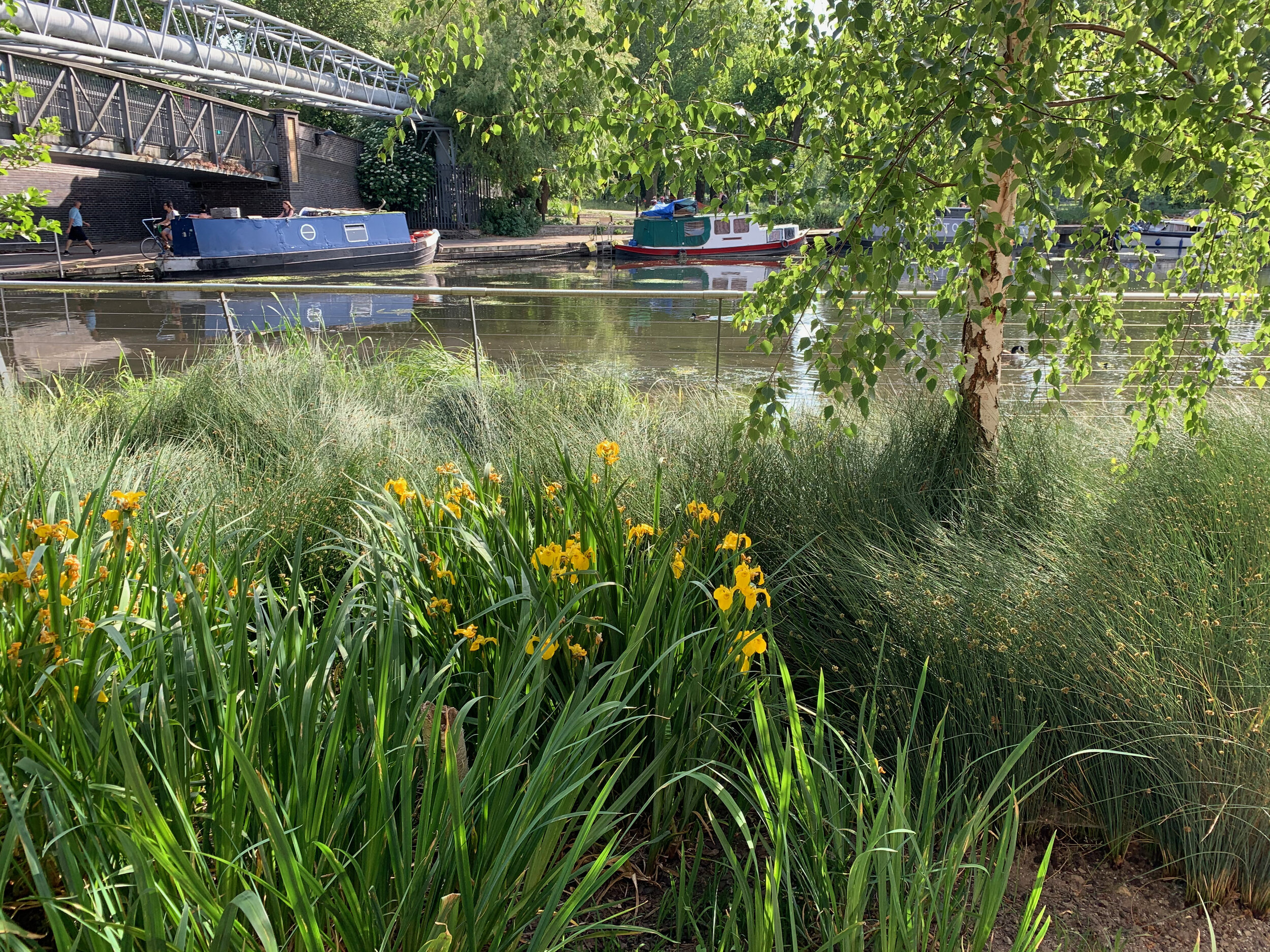
Yellow Flag
Iris pseudacorus
Historically the LGBTQ+ community has been stigmatised and often referred to as being “unnatural.” However, upon closer examination the natural world is rife with queerness. One set of examples can be found in the variety of plants and their reproductive methods. Nature is in constant flux and is at its best when rich in diversity. Concepts such as science and culture, male and female, human and nature are often contrasted in stark binaries but queerness favours multiplicity and gradients. Moving forward, queer stories from culture and nature should be more broadly interwoven into our understanding of the world.
Yellow flag leavesYellow flag flowerAlthough this particular species is yellow, the flower gets the name ‘Iris’ from the ancient Greek messenger goddess of the rainbow, due to its wide variety of colourful blooms, ranging from yellow to deep purple. As the rainbow connects the heavens to the earth, it was said that the goddess Iris connected the gods to humanity; she is often depicted with a pitcher (symbolising a cloud). When referring to the flower, the term “flag” is usually used to indicated wild iris. The rainbow is, of course, a prominent queer symbol used predominantly in the pride flag. Gilbert Baker designed the first rainbow pride flag in 1978. Each colour has a specific meaning, and yellow symbolises sunlight. Yellow is also often used as a gender non-binary colour. In 2018 Daniel Quasar made a more inclusive version of Baker’s design adding brown (representing people of colour), black (representing AIDS victims), and pink and light blue (representing transgender communities). There is a myriad of different flags that have since been designed to represent different queer communities.
There are over 300 species of Iris distributed throughout the northern hemisphere, and most commonly in desert or rocky mountain habitats, and particularly in the Mediterranean and Asia. Some species, like Iris pseudacorus, only occupy wetland habitats. Iris pseudacorus is a perennial herb native throughout Europe, Asia, and northern Africa. It can grow as tall as 1.5 metres, and has large, bright yellow flowers with three upright petals (known as “standards”) and three spread petals (known as “falls”). It has long sword-shaped leaves. It also has a network of rhizomes that allow it to withdraw underground when times are tough. The plant can reproduce sexually through its flower (bearing fruit and seeds) but can also grow a new clone of the mother plant from the rhizome asexually.
Further Reading:
https://en.wikipedia.org/wiki/Iris_pseudacorus
https://greekgodsandgoddesses.net/goddesses/iris/
https://www.dezeen.com/2018/06/12/daniel-quasar-lgbt-rainbow-flag-inclusive/




